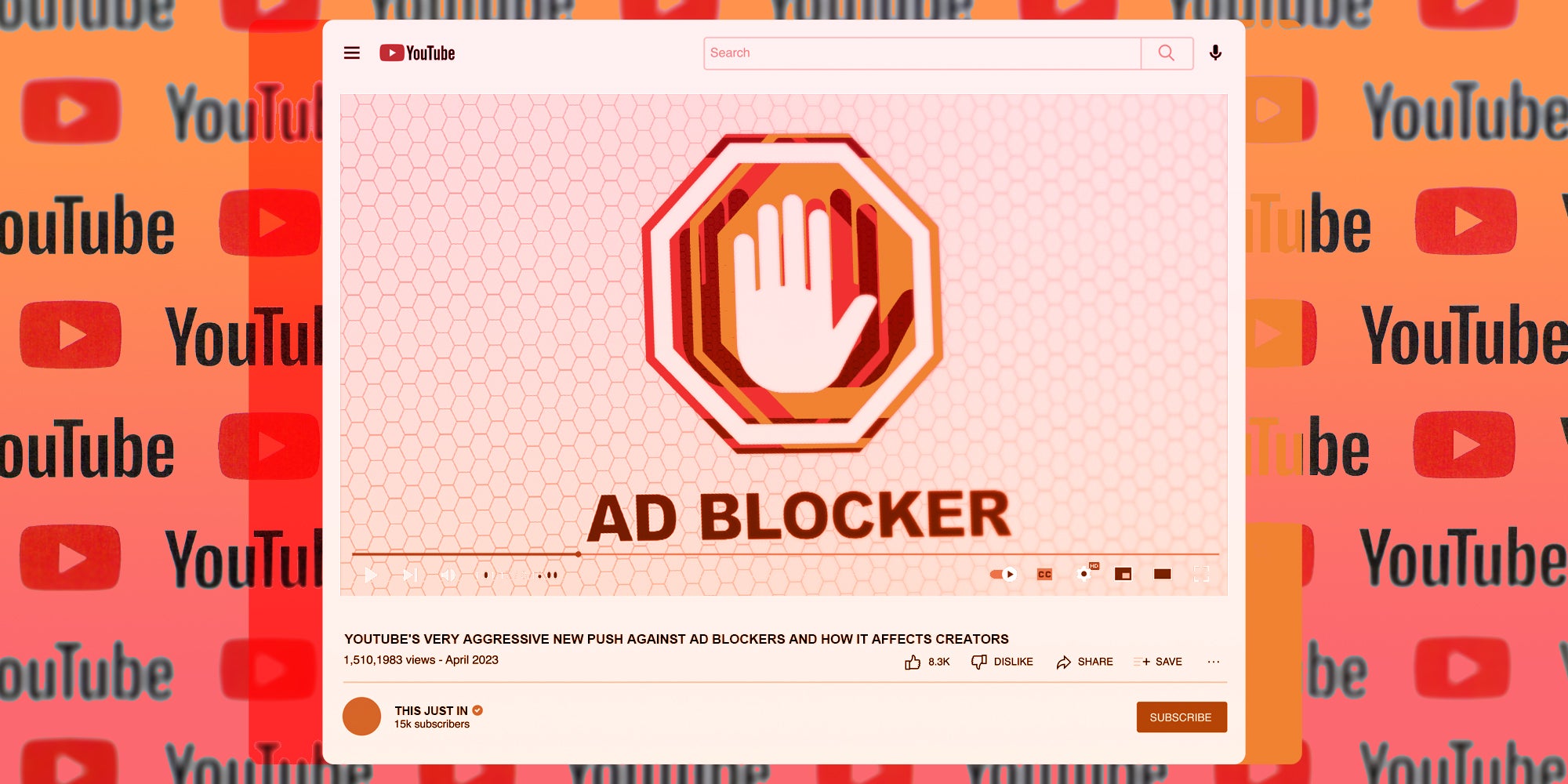
As anyone who enjoys movie trailers, K-pop dances, or omelet-making tutorials likely already knows, YouTube has been aggressively cracking down on the use of ad-blocking software. Back in May, Google’s streamer introduced a new pop-up informing anyone utilizing an ad blocker that they were prohibited by the Terms of Service, and recommending a paid YouTube Premium subscription instead. (For $13.99 per month, YouTube Premium offers an ad-free experience, along with the ability to download videos, play content in the background, and more special features.)
You Can’t Keep a Good App Down
In October, YouTube started not only showing ad blockers the warning but holding it in place for the length of a typical ad break, essentially recreating the pre-video holding pattern even for those who didn’t view the commercial itself. The company has also suggested that, eventually, users who refuse to remove their ad blockers will be barred from viewing YouTube entirely, though it remains unclear whether or not they’ve actually taken this dramatic step.
Regardless, the push is having an undeniable impact. The companies behind the most popular ad blockers report that they’ve seen a huge uptick in uninstallations throughout October after YouTube introduced the new warnings. AdGuard told Wired that, while it typically saw around 6,000 uninstallations of its Google Chrome extension per day, that number jumped to 11,000 starting on October 9. On October 18th alone, 52,000 people removed the extension from their browsers. Another ad-blocking company, Ghostery, reported flat usage in October, along with a surge in uninstalls; 90% of surveyed users said that they removed the app specifically because it stopped working on YouTube.
A Boon to Creators? Or YouTube’s Coffers? Or Both?
But even if the program ultimately works as intended, and forces a lot of YouTube regulars to either start watching ads or paying up for monthly subscriptions, it’s worth pondering who specifically benefits from this crackdown: YouTube the company, or its hard-working independent content creators?
According to YouTube, they’re acting in the best interests of their community. A YouTube spokesperson discussing the program told Forbes that “ads support a diverse ecosystem of creators globally and allow billions to access their favorite content on YouTube.” The company notes that $50 billion has been paid out to creators, artists, and media companies via the platform.
Noted YouTuber Hank Green — one-half of the platform’s iconic “Vlogbrothers” along with sibling John — echoed this sentiment in a long thread on X/Twitter the other day. Green notes how essential ad revenue is for YouTube creators, including prominent and successful veterans like himself.
After all, 55% of ad revenue earned by YouTube on videos goes back to the creators, so anyone blocking those ads is blocking some funds from ending up in the creator’s pocket. A percentage of monthly earnings from YouTube Premium sign-ups also goes to partner channels, so a boost in Premium sign-ups would also theoretically trickle down to creators.
Still, as even Green notes, the situation is not purely black-and-white. If the company was motivated solely to boost earnings for its most dedicated users, it could simply tweak the revenue share itself. Boosting creator earnings by disallowing ad blockers is bound to convince some viewers to watch less YouTube content, or push people off of the platform entirely, which causes a dip in everyone’s viewership with no residual benefits for creators.
YouTube earned $7.95 billion in ad revenue in Q3 of 2023 as-is, prior to any ad blocker crackdown. That’s a 12.5% year-over-year increase over Q3 2022. Google could easily afford to pay out more to creators. They’re doing just fine.
Is This Really the End for Ad Blocking?
There are also some compelling reasons why some people might prefer an ad blocker, aside from just feeling impatient. Some users really do have concerns about data privacy, and when you consider that Google and YouTube have been repeatedly busted for violating their own standards around advertising, particularly advertising to minors, this doesn’t seem entirely unreasonable.
There are, of course, also many special cases to consider, from educators showing YouTube videos in class who might not want to sit through some 30-second spots first, to users with limited internet access hoping to reduce data usage or get faster load times. Last December, the FBI actually advised Americans to employ ad-blocking software, as protection against cybercriminals using fake ads to steal users’ identities and install ransomware on their systems.
These are limited use cases, and of course, situations that YouTube could deal with if they become significant roadblocks. It’s probably too soon to tell what kind of actual, noticeable impact these changes will have on working creators. In a recent Reddit thread that was largely negative about the changes, some creators nonetheless suggest they’ve seen an earnings boost since the crackdown started.
This will be a fascinating situation to track, as it truly highlights the complex, interdependent relationship between YouTube the platform, its most prominent advertisers, the base of viewers who watch its content, and the creators who supply fresh videos. Whose preferences will ultimately win out? And will new technological innovations and developments once more thwart efforts to finally convince everyone to just sit still through 30-60 second ad breaks?
What are your thoughts on the YouTube ad blocker crackdown? Email tips@passionfru.it to share your story.




